Your Trusted Custom Neoprene Chapstick Holder Products Manufacturer
We make it easy for you to build your brand by providing a one-stop solution to your OEM/ODM custom production.
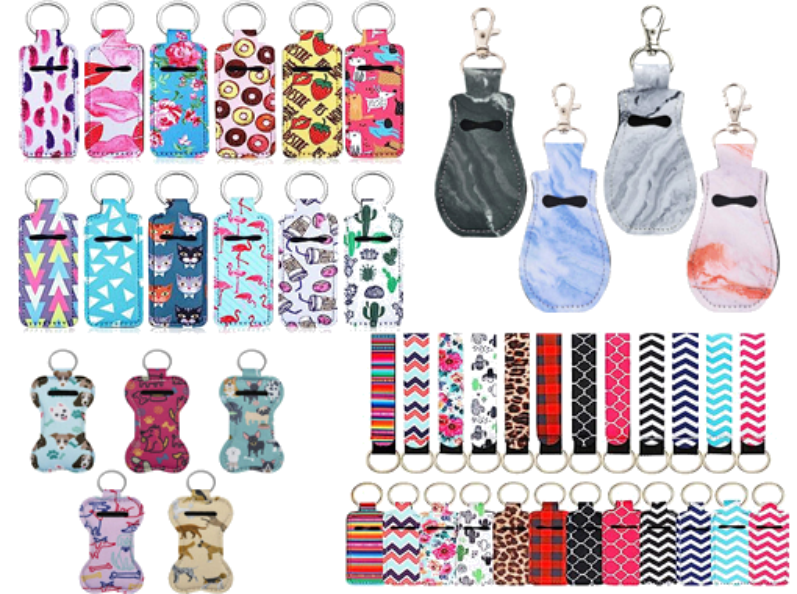
We ensure that every custom neoprene chapstick holder with high quality will stand out.
Neoprene chapstick holder customization in various types,colors,pattern ,logo,and others design is what Oneier Company does best.
We offer OEM neoprene chapstick holder products in a broad range of types, artwork, packaging and other accessories.
Also, we have a strong fabric supply chain to provide the widest range of fabric customized services for your neoprene chapstick holder.
Our product has received 100% repurchase from our partners,Strict quality control reflected in product details.

Detail One
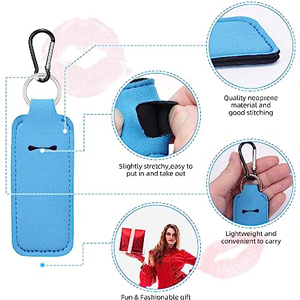
Detail Two
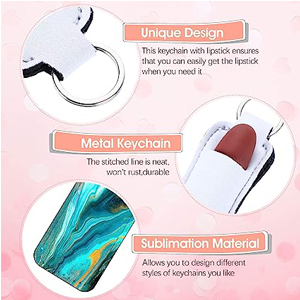
Detail Three
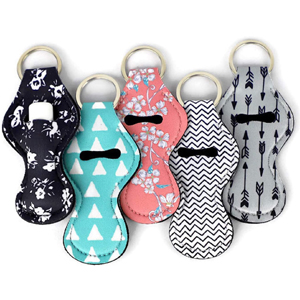
Detail Four
You just choose any types you prefer for your custom neoprene chapstick holder, and we will take care of the rest.
As a custom neoprene products manufacturer, Oneier has a team of 20+years experienced engineers, designers, sales consultants, and production team who have been engaged in the research and development of different neoprene products. We also have the ability and equipment to conduct advanced testing, production, and packaging. After all, our goal is to make your ideas into a reality.
The benefits And Value We can Bring To You
Custom
Sample making 1-3 day
Delivery
Fast delivery in 1-10 days helps you to take more share of the market
Quality
No complaints, no minor hassles for your customers, which will make your sales worry-free
Cost
Fully automatic equipment manufacturing process for each customer to save production costs and make it more competitive
Support
Put forward your ideas, we design to production completion, for you to save more intermediate costs
Certification
Qualified by BSCI ,Disney ,ISO9001,SGS
You can totally trust us with all certifications shown below
Certification Guarantee

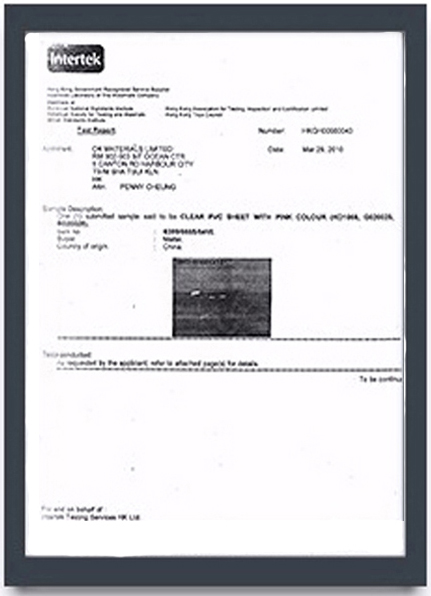
International standardized certification and recognition, so that our workflow, product quality, and management level maintain a high degree of worldwide consistency, ensuring the safe use of each customer.
After obtaining the certificate, enterprises are able to improve product quality by implementing standards, improving and perfecting management, so that each pipe household is satisfied.
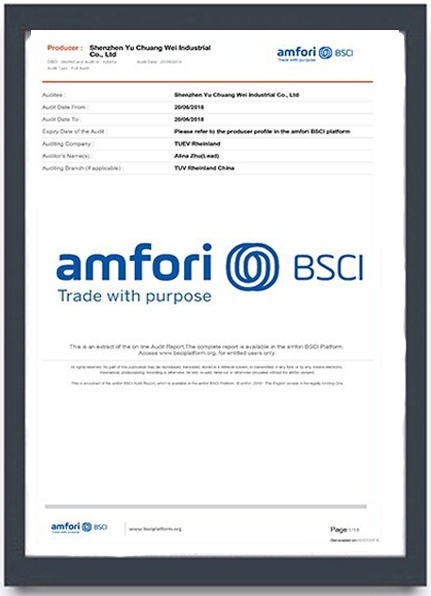
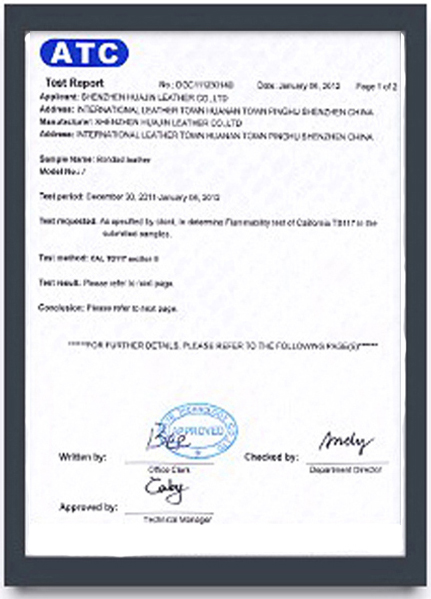
Official certification by third parties, so that products and services are secure and standardized, and every item delivered to the customer is guaranteed.
Hey, don't hesitate to try & feel the FREE SAMPLES before making up your decision
Cooperating Brand Partners Trusted
Your product is produced in reliable factory like our already cooperating international brand partners below:

Effective Production Process of Your Neoprene Products OEM
We believe quality is always the key to success, which includes a responsible approach to manufacturing, and controlling whole process.

1-Business Contact

2-Sample Creation

3-Material Preparing

4-Material Cutting

5-Bulk Production

6-Quality Inspection

7-Product Packaging

8-Cargo Warehousing
What did our happy clients say?
Andrew Jackson
22nd Oct,2021 America
Due to policy reasons, my team and I have analyzed and developed the sales of neoprene koozie. The sales volume increased by 200% last month. It was beyond my expectation. The store staff told me that our this neoprene sleeves always attract the attention of customers. many old customers introduce their friends to come and purchase because of the good quality of our products.It’s true. Awesome, this works better than any other way of advertising. Thank you for providing us with the neoprene can cooler.


Carl Parein
13th Dec,2019 France
Because of the needs of the company’s project development, I selected many suppliers of neoprene koozie for comparative analysis. I was very lucky to find you on Google. I was surprised by the professionalism of your team. From the sharing of product expertise, the introduction of production technology, and the whole service of order production and delivery, the whole project has been well connected. Our products are sold well in the local market. Thank you very much, We will try to maintain cooperation with you all the time
Daniel Garcia
25th May,2010 Australia
I have chosen neoprene koozie as a new project for the company. In the early stages, I analyzed many Chinese suppliers, but only you mentioned,welcome me to visit your factory at any time. I will not hesitate to schedule and purchase a flight to your company’s factory to learn about your company’s products, production processes, and other information. Your reception service is very meticulous,That’s great. Your factory’s professionalism and service have given me confidence in managing my neoprene can coolers project well. thanks

Start Your Custom Neoprene Products Business Today!

Anna
Sales Manager

Grace
Sales Manager

Julie
Sales Manager

Mike
Sales Manager

Nancy
Sales Manager
We are here for all your business needs and questions.
What Are The Benefits of Neoprene Wetsuit Gloves Products?
Neoprene wetsuit gloves are designed primarily for water sports and activities in colder conditions. The advantages of neoprene wetsuit gloves include:
- Thermal Insulation: Neoprene is a type of synthetic rubber with excellent insulation properties due to its closed-cell structure. It traps water that is then heated by the body, forming a warm layer around the hands.
- Water Resistance: The material itself is naturally water-resistant, which helps to keep the hands relatively dry and warm when submerged in water.
- Flexibility: Despite its insulating properties, neoprene remains flexible even in cold temperatures, allowing for a good range of motion which is essential for activities such as swimming, diving, or surfing.
- Durability: Neoprene is a tough material that can withstand the rigors of aquatic environments, including exposure to saltwater and sunlight, while resisting tears and abrasions.
- Grip: Many neoprene wetsuit gloves come with textured palms and fingers to provide better grip in wet conditions, which is critical for handling equipment or maneuvering.
- Fit: They can be designed to fit snugly, which helps to prevent water exchange and maintains the layer of warm water close to the skin, enhancing insulation.
- Protection: Wetsuit gloves protect the hands from various hazards, such as sharp rocks, coral, and marine life, as well as from UV rays.
- Versatility: They come in various thicknesses to suit different temperatures and conditions, from tropical to frigid waters.
- Buoyancy: The buoyant properties of neoprene can assist swimmers and divers with their buoyancy control in the water.
- Ease of Use: Neoprene gloves are generally easy to put on and take off, especially if they come with additional features such as zippers or Velcro straps.
Overall, neoprene wetsuit gloves are an essential piece of gear for water enthusiasts looking to maintain hand dexterity and comfort in cold conditions. They provide a balance of warmth, protection, and functionality that is difficult to match with other materials.
Do Wetsuit Gloves Work?
Wetsuit gloves are designed to work by utilizing the insulating properties of neoprene. Neoprene, a synthetic rubber, contains countless tiny air bubbles, providing excellent thermal insulation by trapping heat close to the skin. This is crucial in aquatic activities, as water can conduct heat away from the body 25 times faster than air.
The effectiveness of wetsuit gloves is twofold:
- Insulation: The neoprene material retains heat by forming a thin boundary layer of water between the glove and skin. This layer is warmed by body heat and acts as an insulator. The thickness of the neoprene determines the level of insulation, with thicker gloves offering more warmth but less tactile sensitivity.
- Wind Resistance: Neoprene’s density makes it a good barrier against wind, which can amplify the feeling of cold through convective heat loss. Wetsuit gloves that feature a ‘smooth skin’ or a smooth, rubbery outer surface, can drastically minimize the cooling effect of the wind, known as wind chill. By cutting down the wind’s impact, these gloves keep the hands warmer for longer periods.
In addition to insulation and wind resistance, wetsuit gloves are also designed for durability and flexibility. Reinforced palms and fingers can resist wear and tear, while ergonomic designs and flexible neoprene types ensure that wearers can still perform necessary tasks with their hands while wearing the gloves.
For optimal performance, it is essential to ensure a proper fit; gloves that are too tight can restrict blood flow and reduce warmth, while those that are too loose can allow water exchange and reduce the insulative effect.
In summary, wetsuit gloves function effectively to protect hands from the cold in water sports by combining neoprene’s thermal properties with designs that counteract wind chill and allow for activity-specific dexterity. The most suitable gloves for an individual will depend on the specific conditions they will be used in, such as water temperature, duration of exposure, and activity type.
Custom Neoprene Neoprene Wetsuit Gloves Types
Neoprene wetsuit gloves are designed for various water activities and environments. Based on my experience in the production and research of these products, here are the types of neoprene wetsuit gloves and their characteristics:
- Thickness Variants
- Characteristics: Vary from 1mm to 7mm or more; thicker gloves offer more warmth but less dexterity.
- Usage: Thinner gloves are for warmer waters, while thicker variants are for cold water conditions.
- Five-Finger Gloves
- Characteristics: Provide individual spaces for each finger, allowing greater dexterity.
- Usage: Activities where manual dexterity is necessary, such as operating equipment or intricate tasks.
- Mitts or Mitten Style Gloves
- Characteristics: Fingers are grouped together, which conserves more heat but reduces dexterity.
- Usage: Extremely cold conditions where warmth is prioritized over the need to manipulate objects.
- Lobster Gloves
- Characteristics: A hybrid between five-finger gloves and mitts; the index and middle finger are separated from the ring and little finger for a balance between warmth and dexterity.
- Usage: Cold water activities that require some level of dexterity without compromising too much on warmth.
- Webbed Gloves
- Characteristics: Feature webbing between fingers to increase swimming efficiency.
- Usage: Snorkeling, swimming, or free diving to aid in propulsion.
- Textured or Reinforced Palms and Fingers
- Characteristics: Added grip material or reinforcement on high-wear areas to increase durability and grip.
- Usage: For handling ropes, boards, or other equipment where a firm grip is necessary.
- Gauntlet Style Gloves
- Characteristics: Extended cuffs for additional coverage and secure overlap with wetsuit sleeves.
- Usage: Diving and other water sports requiring a secure seal to prevent water flushing.
- Heated Gloves
- Characteristics: Built-in battery-operated heating elements for additional warmth.
- Usage: Deep-sea diving or prolonged activities in very cold water.
- Dry Gloves
- Characteristics: Watertight gloves that are often part of or connect seamlessly with a dry suit.
- Usage: Cold and frigid water where keeping hands dry is essential to maintaining warmth.
- Eco-friendly Gloves
- Characteristics: Made from non-neoprene or earth-friendlier materials like limestone-based neoprene or natural rubber.
- Usage: For environmentally conscious users and in eco-sensitive areas.
- Seam Construction Variants
- Characteristics: Glued and blindstitched, sealed seams, or fluid-sealed for reduced water ingress.
- Usage: Diverse, based on the need for waterproofing and budget; higher-end gloves typically offer better seam construction for warmth.
Each type of neoprene wetsuit glove has been developed to cater to specific needs, ranging from temperature sensitivity, environmental conditions, and activity requirements. The selection process involves balancing these characteristics against the user’s priorities to ensure the best fit for purpose.
Do Wetsuit Gloves Go Over or Under Wetsuit?
When wearing wetsuit gloves, the goal is to minimize the amount of cold water entering and to maintain the body’s natural warmth. To achieve this, gloves should be worn under the wrist cuffs of your wetsuit sleeves. This layering technique helps to create an overlap that acts as a barrier to water entry.
The scientific principle behind this is simple: reducing water flow between different layers of neoprene allows the thin layer of water trapped inside to be warmed by the body’s heat, which in turn serves as insulation. An over-cuff placement, where the gloves go over the wetsuit, could create gaps that allow water to flush in and out, reducing the insulation’s effectiveness and making the wearer feel colder.
Additionally, when gloves are tucked under the wetsuit, any water that does penetrate is more likely to be trapped by the suit’s seal, which will then warm up and not circulate as freely as it would with an over-cuff arrangement. This method also protects the wrist seal of the wetsuit from potential damage that could be caused by the edges of the gloves rubbing against it.
Ultimately, the under-cuff method of wearing wetsuit gloves is based on maximizing thermal protection and functional design to keep water sports enthusiasts warmer for longer periods in the water.
How Do I Choose Wetsuit Gloves?
When choosing wetsuit gloves, you should consider several factors to ensure you select the best option for your needs. Here’s a scientific and user-friendly guide to selecting the appropriate wetsuit gloves:
- Thickness: The thickness of the neoprene is a primary factor in the level of insulation. Gloves typically range from 2mm to 5mm. A 3mm glove is versatile, offering a balance of warmth and tactile feedback, suitable for a variety of water temperatures. Thicker gloves (5mm) are for colder conditions, providing more insulation at the cost of reduced dexterity. Conversely, thinner gloves (2mm) are for milder conditions, offering more hand flexibility and sensitivity.
- Material and Construction: The type of neoprene and the construction of the glove affect both warmth and flexibility. High-stretch neoprene can improve fit and flexibility, while materials like fleece lining can enhance warmth. Seams can be glued and blind-stitched for waterproofing, or liquid-sealed for even greater protection against water ingress.
- Fit: Gloves should fit snugly without constricting blood flow. Too tight and you’ll lose dexterity and warmth; too loose and water exchange will increase, making your hands cold. Try on several sizes and make a fist to ensure you have enough movement.
- Features: Look for gloves with textured palms and fingers for better grip, and consider those with straps to ensure a secure fit. Some gloves come with longer cuffs to tuck under your wetsuit sleeve to prevent water flushing.
- Activity: Consider the specific activity you’ll be engaging in. For instance, surfers might prefer a glove with more grip and flexibility, whereas divers might prioritize thickness and warmth.
- Environmental Considerations: Be aware of the temperature of the water in which you will be immersing yourself. Check the temperature ranges recommended for different thickness levels and select accordingly.
In conclusion, the ideal wetsuit gloves should offer a blend of warmth, flexibility, and functionality specific to the wearer’s activity and environmental conditions. It’s essential to try on different styles and sizes to find the best fit and to consider how the gloves will work in tandem with your overall wetsuit system for the most effective protection and performance in the water.
Considerations When Buying Neoprene Wetsuit Gloves
When purchasing neoprene wetsuit gloves, there are several key considerations to keep in mind to ensure you select the best pair for your needs. Drawing from extensive experience in the production and research of neoprene wetsuit gloves, here are the types of considerations buyers should evaluate:
- Water Temperature: Choose the thickness of the neoprene based on the water temperature. Thinner gloves (1.5mm-2mm) are suited for warmer waters, while thicker gloves (3mm-5mm or more) are needed for colder environments to provide adequate thermal protection.
- Glove Fit: Ensure gloves fit snugly to prevent water flush but not so tight that they restrict blood flow, which can lead to colder hands. They should allow for full range of motion of your fingers.
- Seam Construction: Look for gloves with sealed seams, such as glued and blind-stitched, which reduce water ingress and increase warmth. Higher-end gloves may also feature liquid sealing for even greater insulation.
- Material Quality: The quality of neoprene can vary significantly. Higher-quality neoprene offers better insulation, durability, and flexibility. Some gloves also feature linings like titanium or fleece for added warmth.
- Dexterity vs. Warmth: There’s a trade-off between the dexterity provided by thinner gloves and the warmth provided by thicker ones. Determine the level of manual dexterity required for your activity versus the need for insulation.
- Palm and Finger Texture: Textured palms and fingers can enhance grip, which is particularly important for handling equipment or for sports like surfing.
- Cuff Length: Longer cuffs can tuck into wetsuit sleeves to minimize water entry. Check if the gloves can integrate well with your existing wetsuit.
- Durability: Consider reinforced areas, such as the fingertips and palms, which are prone to wear and tear. Stronger materials in these areas can extend the life of the gloves.
- Ease of Donning and Doffing: Some gloves come with features like zippers or Velcro closures that make them easier to put on and take off, especially when wet.
- Environmental Impact: Eco-conscious buyers might want to look for neoprene alternatives or neoprene sourced from limestone or non-petroleum-based materials.
- Brand and Reviews: Research brands and read user reviews to gauge the performance and quality of the gloves.
12. Cost and Budget:
- Consider your customers’ budget when selecting custom wetsuit gloves. Look for manufacturers that offer competitive prices and bulk discounts, so you can provide your customers with quality facial care at an affordable price. At Oneier,we offer high-quality wetsuit gloves including Various styles at an affordable price.
13. Bulk Purchasing Options:
- Minimum Order Quantity: Understand the minimum number of units (MOQ 50-100)required to avail bulk pricing.
- Customization in Bulk: Ensure that customization options are still available when purchasing in bulk.
14. Quality Assurance:
- Make sure to purchase neoprene wetsuit gloves from a reputable manufacturer like Oneier that has stringent quality control measures in place. This ensures that the products you are selling meet safety and efficacy standards and will provide your customers with the best results possible.
By taking these factors into account, you can make an informed decision and select a pair of neoprene wetsuit gloves that best suits your aquatic activities while ensuring comfort, durability, and thermal protection.
What is The Process for Customizing Neoprene Wetsuit Gloves
Customizing neoprene wetsuit gloves involves several steps from design to production. Here’s a general outline of the process that manufacturers might follow:
- Client Consultation:
- Discuss the client’s specific needs, including intended use (diving, surfing, etc.), temperature range, and any special features (touchscreen compatibility, reinforced areas, etc.).
- Determine the required sizes and quantities.
- Material Selection:
- Choose the type and thickness of neoprene based on thermal insulation needs.
- Decide on additional materials for grip, linings, and closures.
- Design and Prototyping:
- Create detailed designs, including glove shape, seam layout, and additional features such as wrist straps or zippers.
- Produce a prototype based on the design to test for fit, flexibility, and warmth.
- Client Feedback and Revisions:
- Present the prototype to the client for review.
- Make any necessary adjustments to the design and prototype as required.
- Pattern and Template Creation:
- Finalize the pattern for the gloves, which includes all panels and pieces that will be cut from the neoprene.
- Develop templates for any additional features or reinforcements.
- Material Cutting:
- Cut the neoprene and any other materials to shape using the patterns and templates.
- Printing and Branding (if applicable):
- Apply any logos, patterns, or text that the client requires, typically through screen printing or sublimation printing techniques.
- Assembly:
- Stitch, glue, or weld the seams together, depending on the design and requirements for waterproofing.
- Attach any additional features such as straps, grips, or linings.
- Quality Control:
- Inspect each glove for manufacturing defects and ensure they meet the specifications and standards discussed with the client.
- Client Approval:
- Send samples to the client for final approval.
- Make any last-minute adjustments if needed.
- Production:
- Proceed with the full production run once the client approves the samples.
- Maintain quality control checks throughout the production process.
- Packaging and Shipping:
- Package the gloves according to the client’s specifications.
- Ship the final product to the client.
Throughout this process, communication between the manufacturer and the client is key to ensuring that the final product meets all the client’s needs. Each step may involve several iterations to refine the gloves to the exact requirements specified. Customization allows for a wide range of personalization options, which can significantly improve performance and satisfaction with the final product.
Is Neoprene FDA Approved?
Neoprene, a synthetic rubber, can achieve FDA approval when it is manufactured using ingredients that meet the specific standards and regulations set by the U.S. Food and Drug Administration (FDA). This ensures that the material is safe for applications that involve direct or indirect contact with food.
Compliance with FDA Guidelines: For neoprene to be FDA approved, it must be produced from ingredients that are on the FDA’s list of approved substances. This is crucial as it ensures that the material does not contain any components that could be harmful when in contact with food or beverages.
Color and Appearance: FDA-approved neoprene is generally available in an off-white color. The color is a distinguishing feature that helps in identifying FDA-compliant materials, ensuring that they are easily distinguishable from non-compliant materials.
Intended Use: FDA-approved neoprene is specifically designed for repeated food exposure. This makes it a safe and reliable choice for applications in the food processing industry, where materials are constantly in contact with different food products.
Oil Resistance: One of the key characteristics of FDA-approved neoprene is its excellent resistance to oils. This property is particularly important in food processing and industrial applications where exposure to oils and fats is common. The material’s ability to resist these substances ensures that it maintains its integrity and does not degrade over time, even under constant exposure.
Preference in Food Processing and Industrial Applications: Due to its compliance with FDA standards, as well as its resistance to oils and suitability for repeated food contact, FDA-approved neoprene is a preferred material in the food processing industry. It is also commonly used in various industrial applications where safety and compliance with health standards are paramount.
In summary, neoprene can be FDA approved when produced with specific, FDA-compliant ingredients, ensuring its safety for use in food-related applications. Its excellent oil resistance and suitability for repeated food contact make it a preferred material in both the food processing industry and various industrial contexts.
Most Asked Questions About OEM ODM Custom Wetsuit Gloves Product Line
Are you interested in creating a custom neoprene wetsuit gloves product but don’t know where to start?
Here are 10 FAQs to help guide you through the process:
1. What options are available for customizing the thickness of neoprene wetsuit gloves? We offer a variety of thicknesses ranging from 1mm for tropical waters to 7mm for cold-water diving. The choice depends on thermal insulation needs and dexterity requirements.
2. Can we customize the grip pattern on the gloves? Yes, grip patterns can be customized for different activities, such as reinforced grip for surfing or a smoother grip for diving.
3. Is it possible to add our brand logo to the gloves? Absolutely, we can add your logo through methods like silk screening, sublimation, or heat stamping, depending on the design and colors.
4. Can you produce gloves that are touchscreen friendly? Yes, we can integrate conductive material into the fingertips to make them touchscreen compatible while maintaining the gloves’ integrity and warmth.
5. What is the minimum order quantity for custom wetsuit gloves? The MOQ can vary, but generally starts at around 100 pairs per design to ensure cost-effectiveness.
6. How do we decide on the best cuff design for our gloves? We recommend adjustable Velcro cuffs for ease of use or sealed cuffs for better water tightness, depending on your customers’ needs.
7. What are the options for seam construction? We offer glued and blindstitched seams for superior water resistance, flatlock seams for comfort in warmer water, and taped seams for enhanced durability.
8. How can we ensure a good fit for a wide range of customers? We provide a size chart based on hand measurements and can produce gloves in a range of sizes, from XS to XXL, to cover all customer bases.
9. Is there a possibility to create eco-friendly neoprene gloves? Yes, we are able to utilize limestone-based neoprene or recycled materials which have a lower environmental impact than traditional neoprene.
10. How long is the production lead time for a custom order? Lead times can vary depending on order size and customization details, but typically it ranges from 1 to 3 weeks after final design approval.
Remember that each manufacturer might have different capabilities and offerings, so it’s crucial to discuss these details thoroughly before finalizing any orders.
